For much of the 20th century, Waikiki has been many things to many travellers: a first encounter with Asian and Polynesian food, culture and history. A plug-and-play destination for honeymooners and families. A holy site for surfing and outdoor sports enthusiasts. And, of course, a larger-than-life backlot for movies and television shows that did their bit to secure Waikiki’s place in American pop culture.
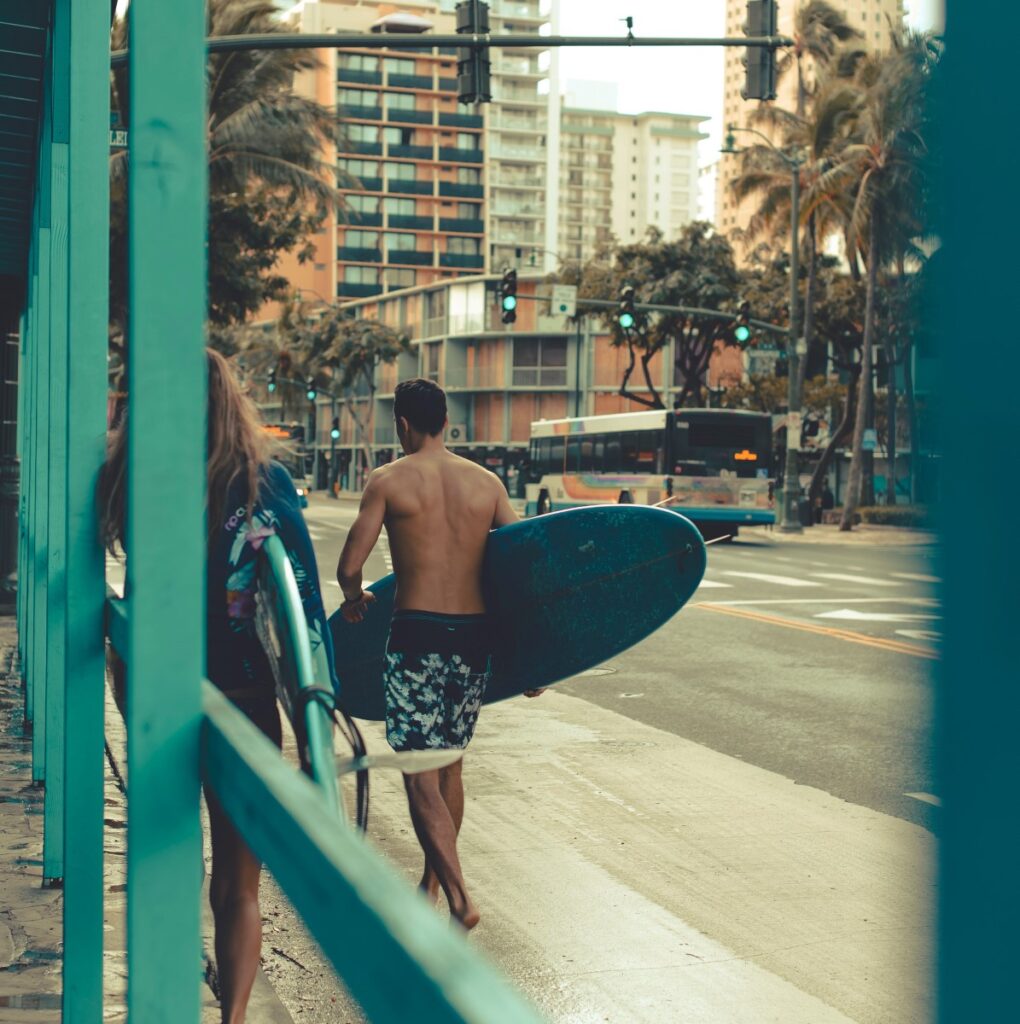
And Waikiki’s appeal continues to change. What played in my mind as a mixed and democratic expanse of hotels and resorts from budget to boutique is now a glossy interconnected maze of indoor and outdoor structures. During my early visits in the late 90s and early 2000s, I dined at well reviewed restaurants Beijing (a high-end Chinese seafood and dim sum restaurant), Keo’s and Kioni’s (trendy Thai of that time), the original beach-facing Duke’s Restaurant, and the International Marketplace, the multicultural street food mecca predating food trucks and pop-ups by a few decades. Although the stalwart ABC general stores are still going strong, Kalākaua Avenue today is a golden mile of top-tier luxury boutiques like Ferragamo and Dior and eclectic home-grown lifestyle shops drawing visitors in with small batch home goods, food and apparel.
With Kalākaua Avenue’s dramatically altered appearance, Waikiki seemed to be a completely different place. Nevertheless, with a GPS app and a good concierge (at the Halepuna Waikiki by Halekulani), I was reassured that traditional Hawaiian lunch plates and a global gamut of fast foods could be found at a food truck area nearby, almost across the street from the The US Army Museum of Hawaiʻi. There are also food courts built into malls like Royal Hawaiian Center, plus inviting outposts of fast food joints from Japan and other Asian countries, and hometown favourites that started out as food truck operations.
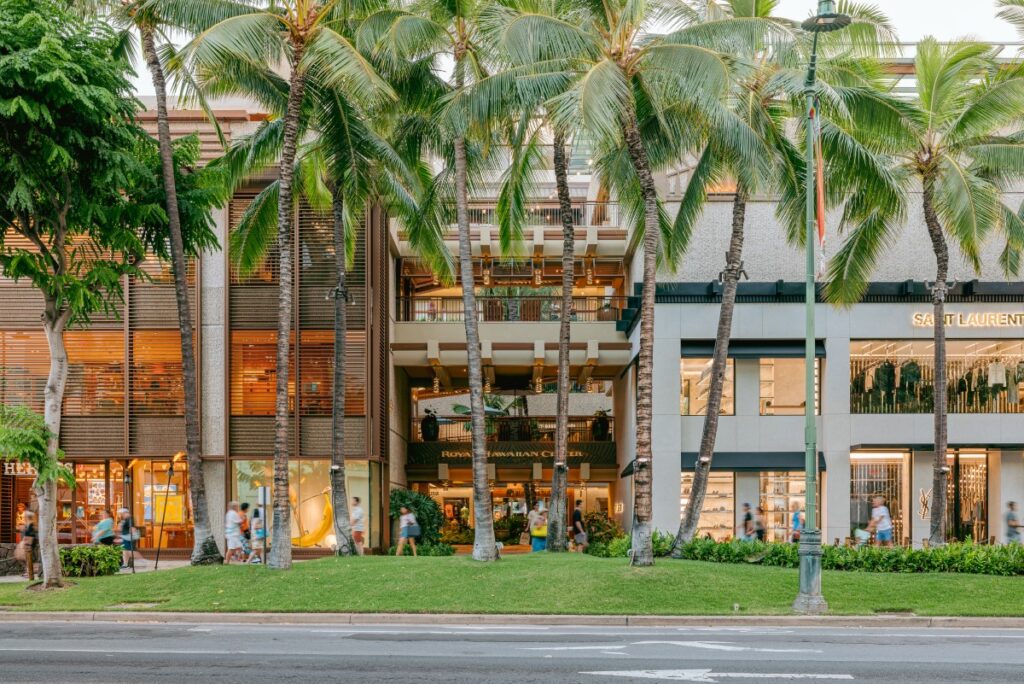
One thing that remains constant in Waikiki, regardless, is its status as culinary melting pot, and this continues to simmer. A new generation of chefs, restaurateurs and food visionaries have filled the large void left by Beijing and Keo’s through inventive and colourful menus that push the Honolulu food scene forward while respecting the 50th state’s native bounty and place as a true culinary crossroads between Asia and North America.
The “Royal” Treatment
A long weekend during state King Kamehameha celebrations (with June 11 standing as King Kamehameha Day) provided ample evidence that Honolulu residents were heading out to Waikiki for fine dining, shopping and family fun. In addition to folks lining the street for the annual parade and street fair, they were taking in family friendly shows at Royal Hawaiian and other open air locations in Waikiki, like the artsy, up-and-coming SALT district, and bar/cocktail hub Nuuanu Street.
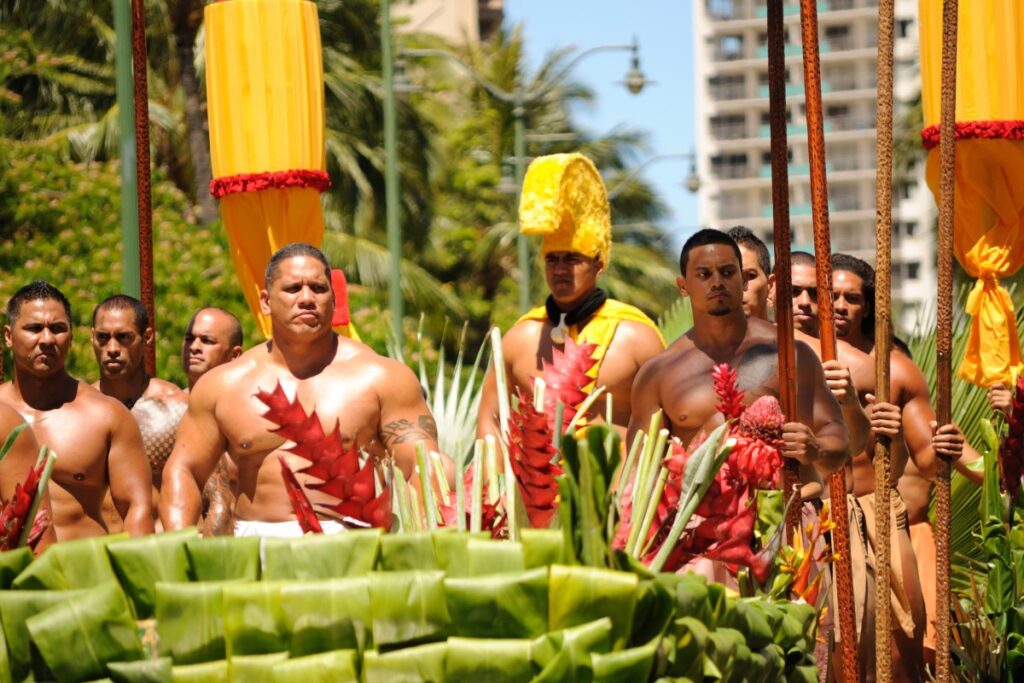
While some may dismiss malls — even gorgeous, LEED-certified architectural marvels like Royal Hawaiian Center (which began its transition in 2005) — as a collection of places that exist everywhere, there are standout home-grown institutions within them that are flourishing. Other big American and international restaurant groups that set up shop in Waikiki show how deftly they can make their dining experience specifically Hawaiian by adding exclusive items to their menu or via an “Aloha” approach to service… that is, extra attention to details and kindness toward the customers along with design elements erasing the line between indoors and outdoors.
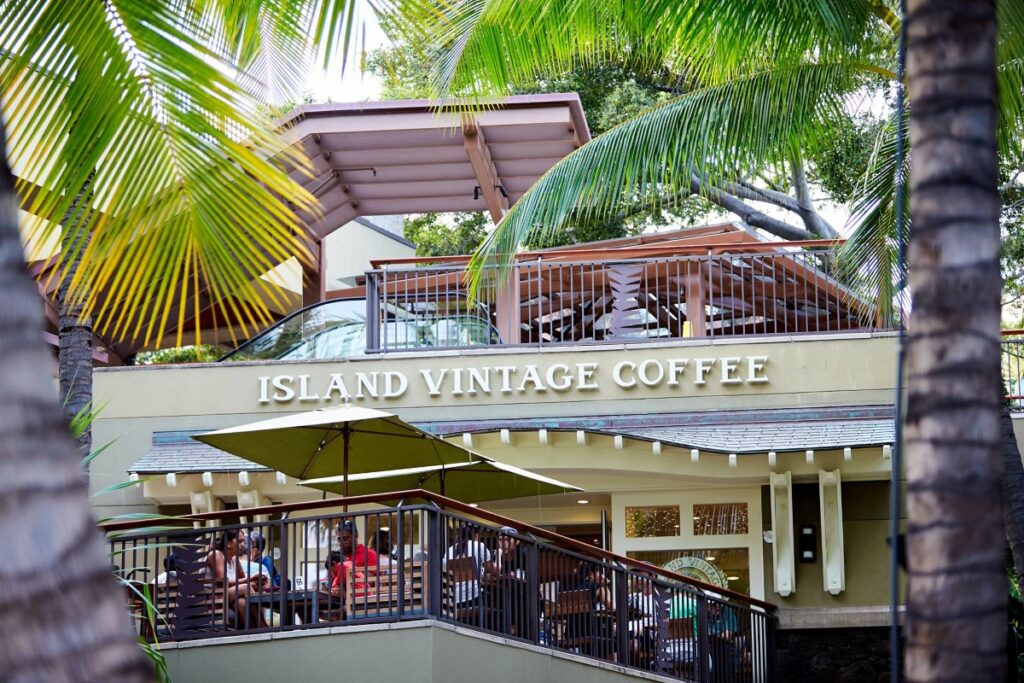
A good place to start the story of Waikiki’s rapid culinary evolution is with the Island Vintage empire. Island Vintage Coffee, founded in 1996, developed a strong following that has prompted the opening of new outposts around the state and Island Vintage Shave Ice. While shave ice shops are ubiquitous throughout Hawaii, Island Vintage’s cachet lies in the way it reinvented Hawaii’s unofficial favourite dessert to an arty street food phenomenon drawing long lines. The jewel in the crown, Island Vintage Wine Bar (opened 2019), has the feel of a private home’s lanai (veranda), with lush outdoor greenery, simple furniture, and Japanese lantern light fixtures.
Island Vintage Wine Bar’s Chef Christine Lee steers clear of conventional pupus (appetizers) and uses proteins, fruits and vegetables from nearby purveyors to transform the island and mainland dishes we think we know into a collection of surprising, sassy original creations. Beyond some of the most beautifully attired charcuterie and cheese plates imaginable, there are many can’t miss dishes and drinks that demand multiple visits (reservations at dinner are strongly advised). In addition to a vegan poke even a meat lover will fall hard for, there’s also addictive crispy eggplant, ahi and wagyu burgers, sizzling garlic shrimp, and a host of seafood dishes. That approach spills over into Island Vintage Coffee’s kitchen, turning out crisp and cool poke plates, sandwiches, salads and smoothies.
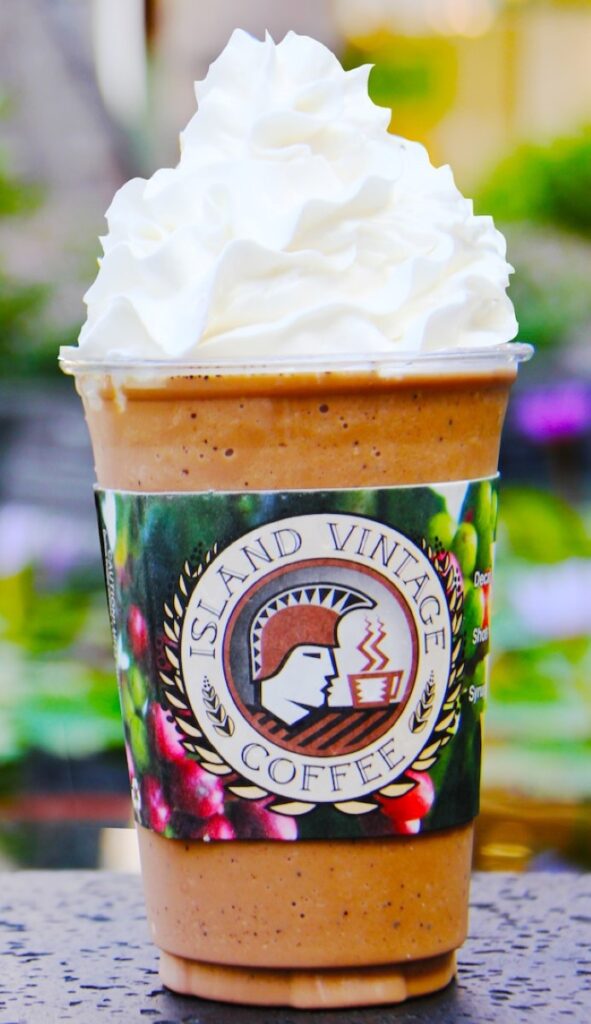
Sommelier and Wine Director Mark Cartland not only lives up to his solid reputation as a wine curator, but also thoroughly understands which old and new world wines will harmonize with such original recipes. While local beers abound, the light and fresh wine cocktails — including the lilikoi (passion fruit) mimosa — bring spark to the meal either before or after dinner.
The Royal Hawaiian Center is also home to outposts of Tim Ho Wan for dim sum and Noi Thai — two places that started outside Hawaii but integrate native ingredients and pan-Asian/Hawaiian ideas to their advantage. Japanese distillery brand Suntory recently made a splash with the presence of its only-in-Hawaii mini-multiplex of Japanese dining spaces (teppanyaki, sushi, and multi-course kaiseki dinner). The standout of this group is Tsuru Ton Tan, which originated in Japan’s Kagawa prefecture. In its own way, the ambiance of this venue is approachable but inviting with disparate elements of steam punk, selvedge denim, and sake barrels that visually communicate how the kitchen combines traditional and modern ideas to accomplish a menu with interesting flavour profiles from around Japan as well as South Korea and other corners of the world. Between ordering appetizers and picking out a main course, the manager explained how the right water could make or break a dish’s authenticity. To achieve perfection, a special filtering system from Japan was installed. The plates and bowls for different dishes, meanwhile, are painstakingly chosen to enhance the sensory appeal of soups, broths, sushi, sashimi and appetizers. Light, crisp cocktails beautifully complement the fresh ingredients and flavour profiles.
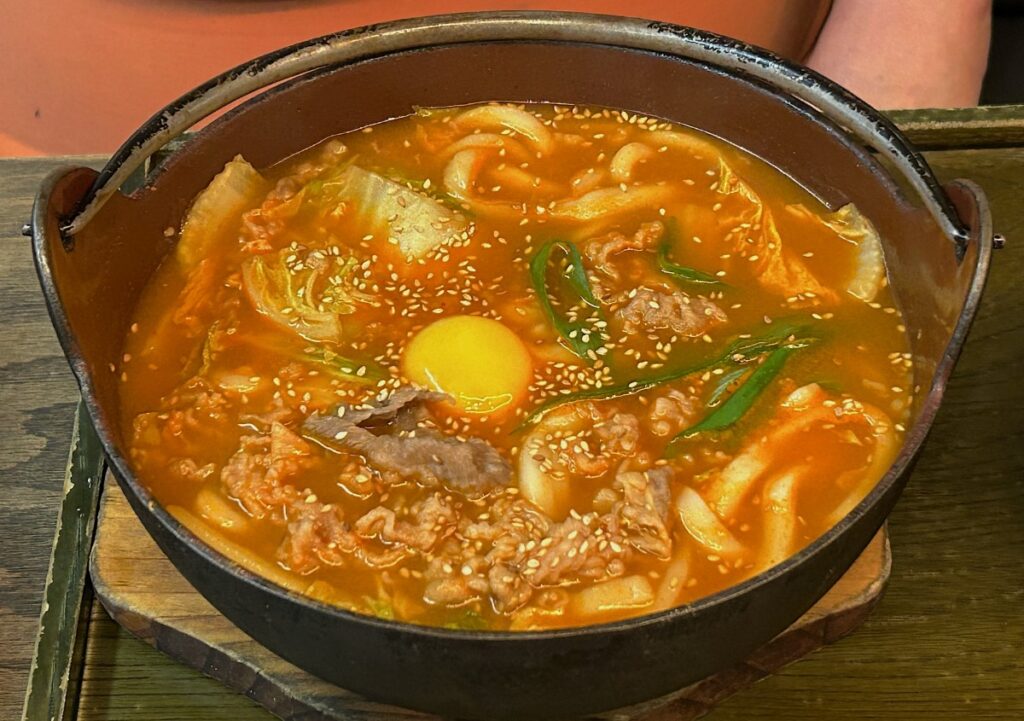
Throughout Royal Hawaiian Center’s dining areas, dessert places appear to almost outnumber restaurants specializing in savory and substantial meals. To narrow down the choices, consider what makes your idea of the perfect dessert. Junbi, another Japanese import, is a healthy indulgence option given its menu of matcha and green tea-based drinks and frozen treats, some exclusive to this branch (Waikiki Punch with Lychee and Aloe or Matcha Fresca blending in many tropical fruits? Yes, please!) and others, just plain delicious (Yuzu Dragonfruit Green Tea). Penny’s Waikiki Malasadas is tailor made for travellers wanting to either satisfy a donut craving or bite into sweet microcosm of Hawaii’s Portuguese and Filipino cultural influences.
Halepuna and Halekulani Highlights
Halekulani Bakery (at Halepuna Waikiki’s entrance, and across the street from the Halekulani) has the distinction of being that rare hotel bakery worth planning into one’s vacation schedule, as it only operates mornings in the latter half of the week. In addition to the alluring aromas fresh juices and coffee drinks using its signature beans, it bakes up some truly splurge-worthy delights, such as the savoury Everything Croissant, Salted Caramel Croissant and decadent Pabana Croissant, with a rich tropical fruit centre. Sliced loaves for DIY sandwiches are available, as are slices of the fabled Halekulani Coconut Cake.
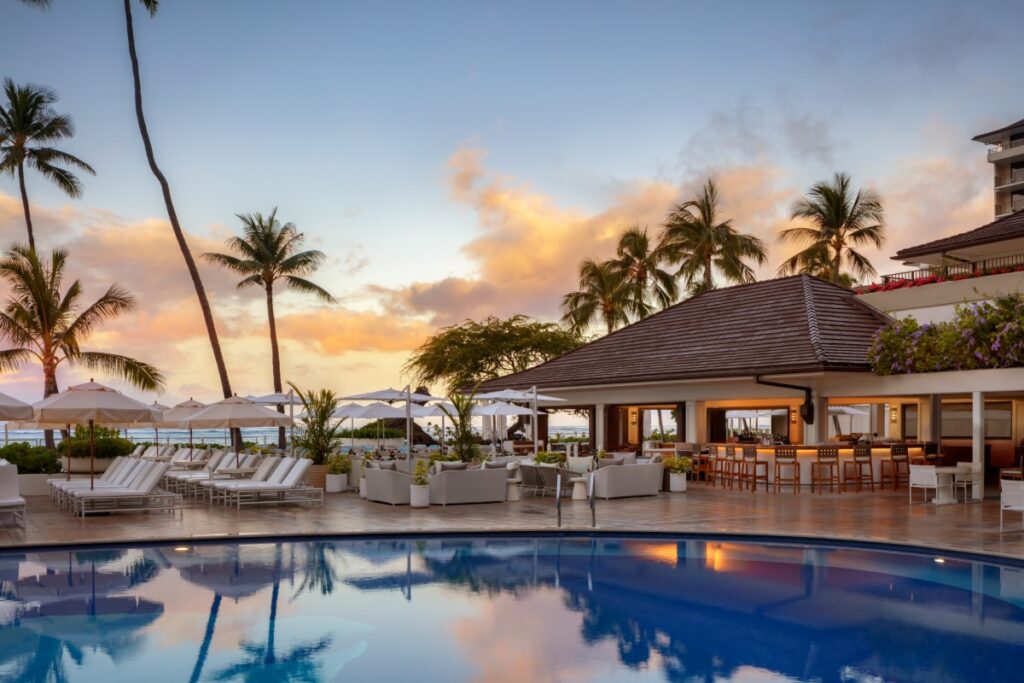
UMI by Vikram Garg, opened in late spring, is not just wowing its guests with its modern breakfasts, but also its one-of-a-kind dinner experience. While the India-born, internationally acclaimed chef has delighted Honolulu diners for years, describing the restaurant as a “feast for all senses” is a statement of fact rather than hyperbole. Garg explains that his seafood-driven menu is “global cuisine” as it integrates locally sourced ingredients, French technique and bold flavour combinations. Long-time food critics, writers and followers of Honolulu’s dining scene regard Garg as perhaps the most globally diverse chef in Hawaii.
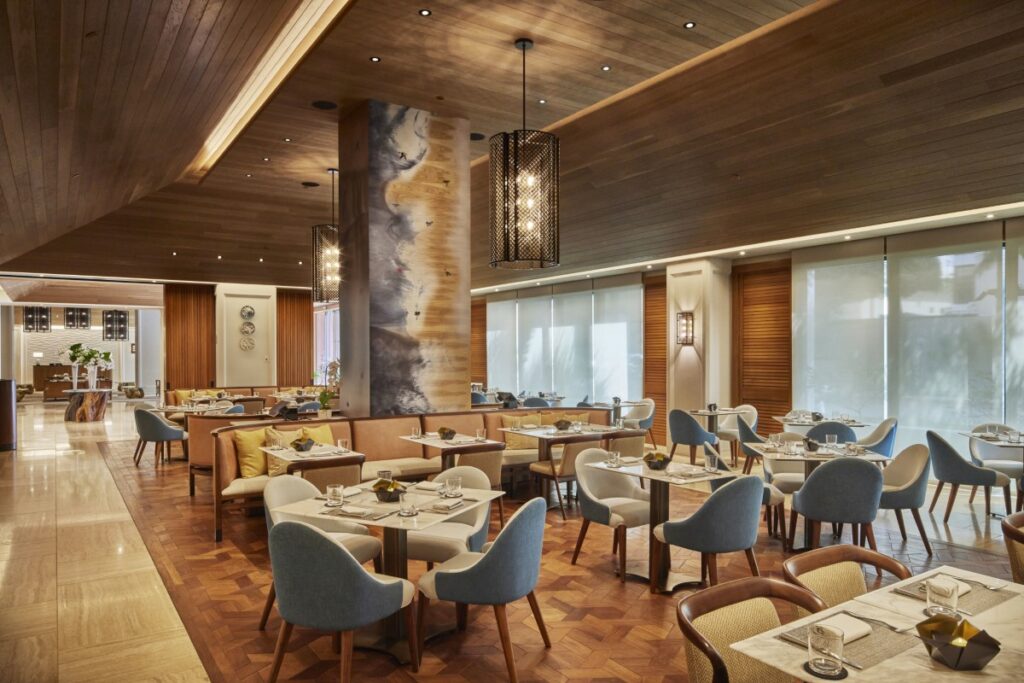
While nods to his Indian origins and past eateries can be found on the menu, Garg devised his latest restaurant to be a one-of-a-kind world factoring in his classical training across France and Japan, as well as disparate elements of other Asian, Mediterranean and European cuisines. “We focus on seasonality and the versatility of our guests,” said Garg when he checked in with my table to see how our meal was going. “We keep in mind Hawaii’s culturally integrated and dimensional palates from East to West so they resonate with the vast cultural culinary preferences among our regulars and visitors to the state. While I source my salmon from New Zealand for the “Ora King Salmon” main, we accompany it with island-favourite sweet Maui onions delicately roasted with smoked eggplant and sesame puree.”
Garg succeeds in balancing familiar and unfamiliar flavours with original dishes that can be ordered a la carte or artfully combined into prix-fixe tasting menus (East Asian-inspired The UMI Menu; The Waikiki Menu, leaning heavily on Hawaiian ingredients and techniques; or The Curry Dinner, informed by his upbringing and past successes with Indian restaurants in town). The restaurant’s interactive artwork, activated by QR codes, shows that his showmanship and knowledge of raw ingredients extends beyond the kitchen.
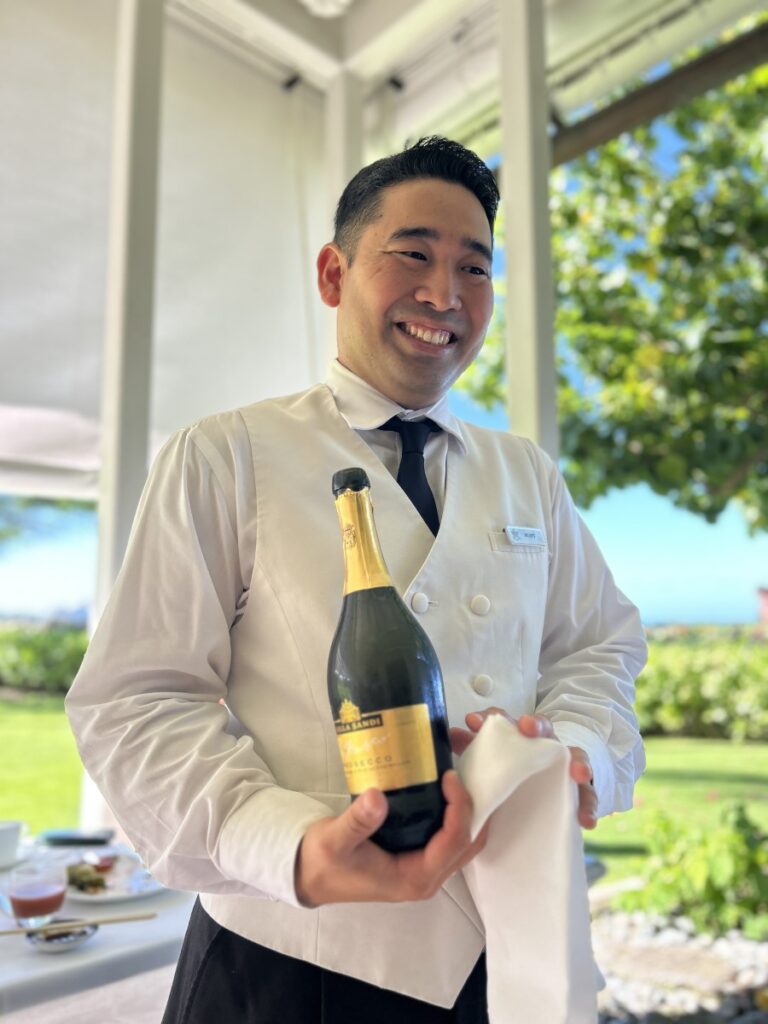
Christian Testa, Executive Chef for both Halekulani and Halepuna hotels, has worked hard to ensure that Orchids’ Sunday brunch and regular menus continue to be special occasion go-tos for residents and vacationers. It can be argued that the prime location overlooking the beach, Diamond Head, and heavenly landscaping do a lot of the heavy lifting, individually manned stations (including seafood, sushi, ramen and Japanese soups, carving stations, and a dreamy dessert area) keep the dining experience lively.
Testa has also worked his magic at House Without A Key alongside Chef Jarrin Otake. The collaboration has resulted in timely updates on beloved dishes from the islands and the mainland, careful selection of ingredients by the kitchen is clearly conveyed in plating and presentation. Best-sellers include a reinvention of the traditional “laulau” plate with pork and butterfish arranged on a bed of coconut-stewed luau leaves; Char Siu Coconut Baby Back Ribs; and a “Skizza” flatbread that gives an island twist to the Margherita pizza. Lewers Lounge, a jazz bar whose stage and audience has maintained an impressive following through the years (including Hawaii-native Bette Midler), is a haven of urbane sophistication as could only exist in Waikiki.
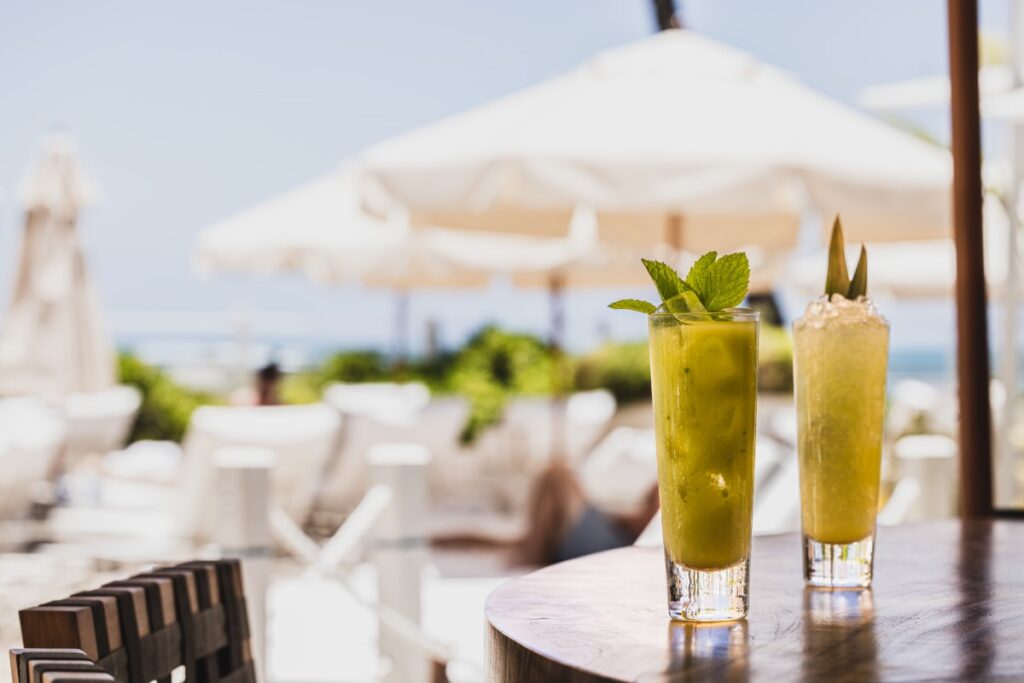
Many food stories are told throughout the entirety of Honolulu, from the constantly evolving Chinatown, to emerging urban enclaves such as SALT at Our Kaka’ano and the bar scene along Nuuano Street, lined with bars dedicated to expanding the boundaries of tropical mixology. However, you can get a colourful introduction to the city’s overall dining scene at Waikiki, whether it’s the focus of your trip or the starting point of a deeper dive into island life.
RECIPES FROM THIS STORY


